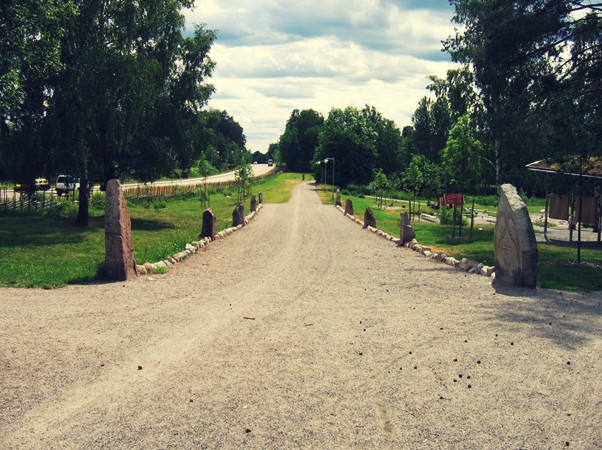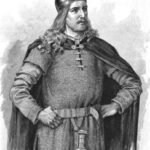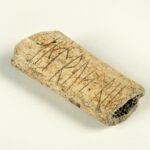Runestones have served many functions: most as landmarks, or as memorials to dead men and women (X raised this runestone in memory of Y, son/daughter of Z). Many runestones were also used to broadcast status or ownership. The Jarlabanke stones are a band of 20 preserved runestones in Sweden, written in Younger Futhark. The stones were commissioned by a chieftan (called a hersir) named Jarlabanke Ingefastsson. The stones date back to the beginning of the 11th century AD, with the oldest runestone raised at the end of the century.
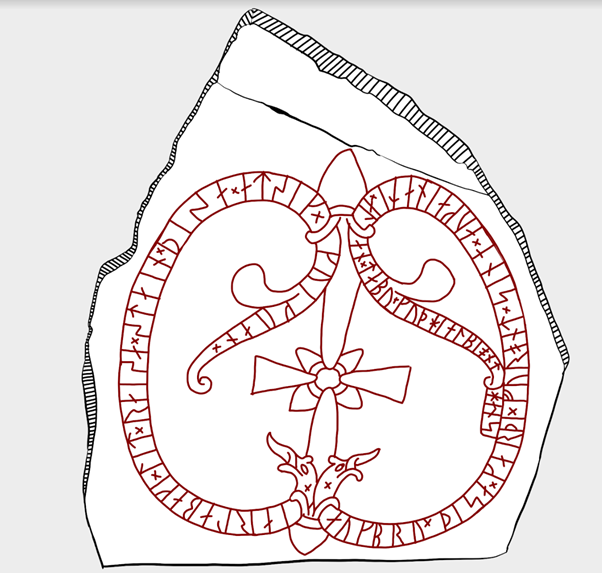
× iarlabaki × lit × raisa × stain × þisa × at sik × kuikuan ×× auk bru × þisa × karþi × fur ont × sina × auk ain ati × alan × tabu × kuþ hialbi ont hans
Jarlabanke had these stones raised in memory of himself while alive, and made this bridge for his spirit, and (he) alone owned all of Täby. May God help his spirit.
Jarlabanke Ingefastsson is famous for raising runestones dedicated to himself—in fact, today he is more famous for his ego than the events which the stones originally commemorated. Jarlabanke declares his own prestige and celebrates the memory of himself on no less than six runestones. There are five preserved runestones that even have almost the exact same inscription: that he, Jarlabanke, had the stones raised in memory of himself while alive, that he was a Christian and not a heathen, and that he made a bridge for his spirit. He also claimed to have alone owned all of Täby, Stockholm County, Sweden. Täby, at that time, only consisted of a small hamlet or village, but it was still a tall claim.
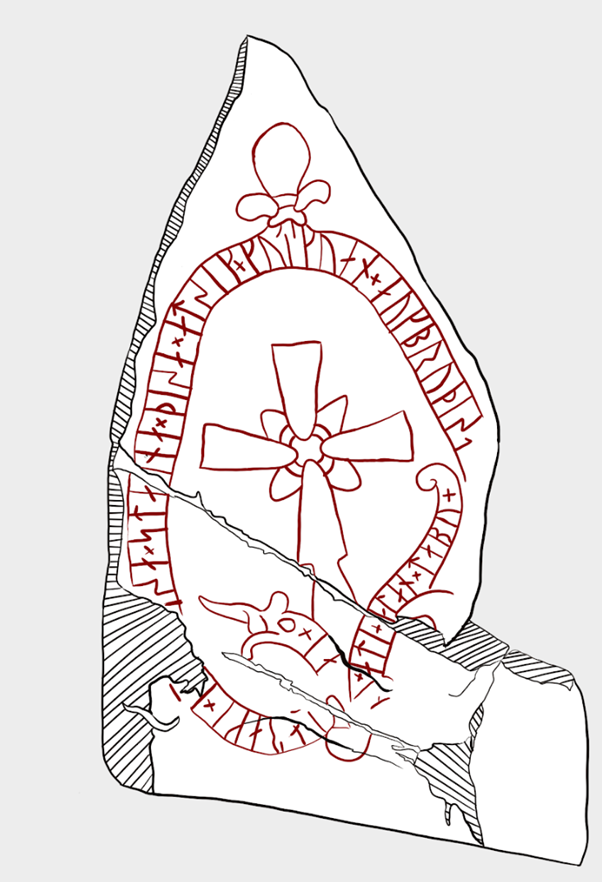
ia[r]labaki × li- —sa × staina × þisa × at sik × kuikuan × auk bru þis(a) [× karþi fur ont ×] si– — × ati + (a)lan × tabu +
Jarlabanke had these stones raised in memory of himself while alive and made this bridge for his spirit (…) owned all of Täby.
We know from the runestone inscription that Jarlabanke had built an extravagant bridge near his own farm. Raising bridges in connection to runestones was a moderately common practice, and one interpretation behind the reasoning is that it was somehow connected to the afterlife. Of course, an interesting exception here is that he had both the runestones raised and the bridge built prior to his own demise. The claim that he owned all of Täby is interesting, especially in connection with the following, unusual runestone.
This runestone, dubbed U 212, is currently in Vallentuna church. It was inscribed on both sides, something which is not seen very often. The inscription is of similar content as the other self-praising runestones, but the reverse side makes mention that Jarlabanke “owned alone the whole of this hundred”. The meaning of this inscription is much debated. This could refer to him being a hersir (a chieftain of a hundred, owing allegiance to a jarl or king), as opposed to actually owning the hundred himself.
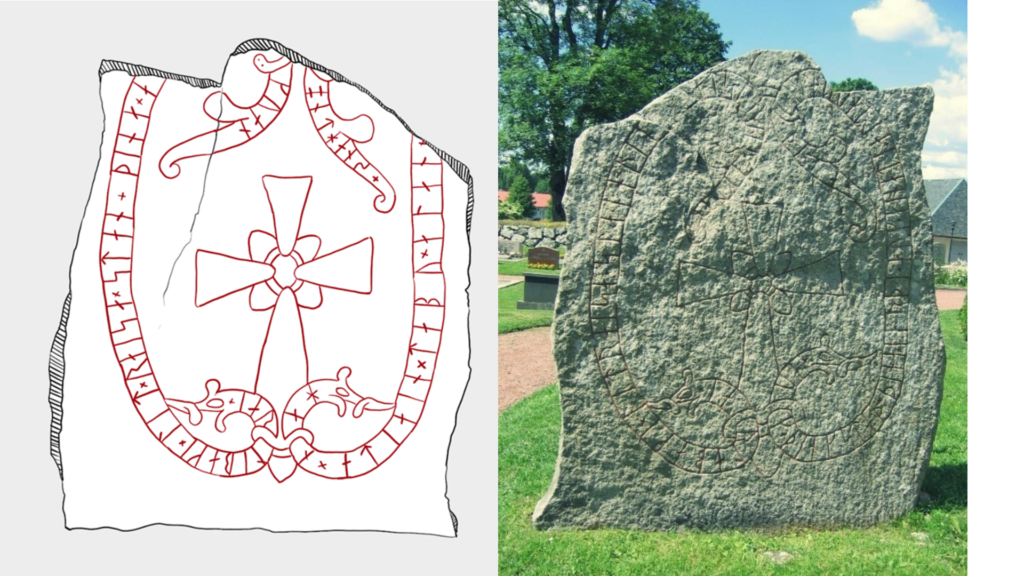
Front
× iarlibaki × lit × raisa × stan + þina × a… … …kuan + han × ati ain × tabu × alan × -… … ont hans +
Jarlabanki had this stone raised in memory of himself while alive. He alone owned all of Tábýr. May God help his spirit.
Back
× iarlabaki × lit raisa × stain × þin- at sik kuikuan × auk × þinkstaþ × þina × karþi + auk × ain ati + alt hu-(t)ari × þita +
Jarlabanki had this stone raised in memory of himself while alive, and made this Assembly-place, and alone owned all of this Hundred.
The Täby Clan
Perhaps the most interesting part of the Jarlabanke stones are not necessarily what they are about, nor the self-praising aspect, but the people named on the remaining 14 stones. Due to the lack of historical records in pre-medieval Scandinavia, we have very few literal accounts. We therefore often lack the more intimate and mundane, yet fascinating, details within prehistory, such as family lines. Oftentimes we must supplement with historical accounts from other countries (such as the Arabic diplomat Ahmad ibn Fadlan, writing about his encounter with Vikings around 900 AD). However, thanks to the Jarlabanke band, we have a basic understanding of several family lines, most prominently the Täby clan. It is even possible in some cases to piece together a family tree, going back several generations.
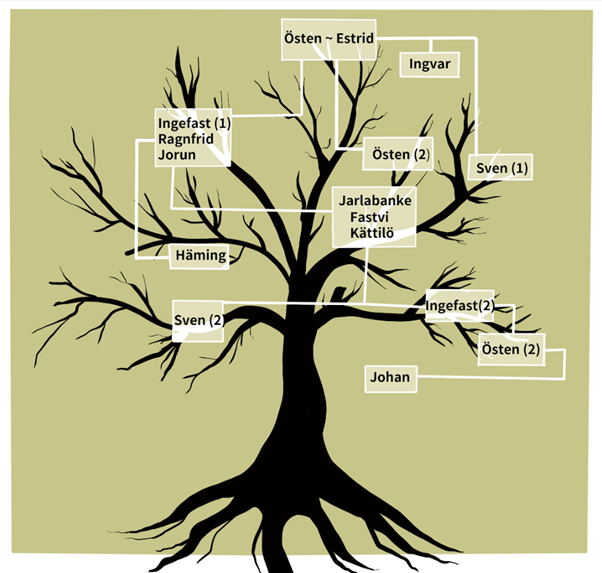
The earliest known inscription that connects to the Täby family line goes back to our main character, Jarlabanke Ingefastsson. He is the most prominent figure but is of the third generation in the Täby family line. Multiple family members of the Täby clan are known from a single runestone, in which they are both named and contextualized according to which role they served in the family. Thanks to the Jarlabanke stones, we are able to follow the same family for multiple generations, and even follow their marital status.
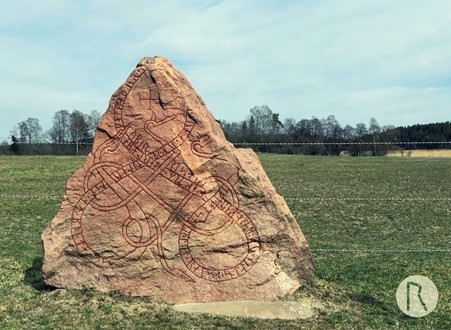
ikifastr ‘ lit ‘ raisa ‘ stain * uk ‘ bro ‘ kera ‘ eftiʀ ‘ iarlabaka ‘ faþur ‘ s[in ‘ uk ‘ sun ‘ io]runa ‘ uk ‘ ketilau lit ‘ at ‘ bonta ‘ sin ybir risti
Ingefast had the stone raised and the bridge made in memory of Jarlabanke, his father, Jorun’s son. And Kättilö had (it raised/made) in memory of her husbandman. Œpir carved.
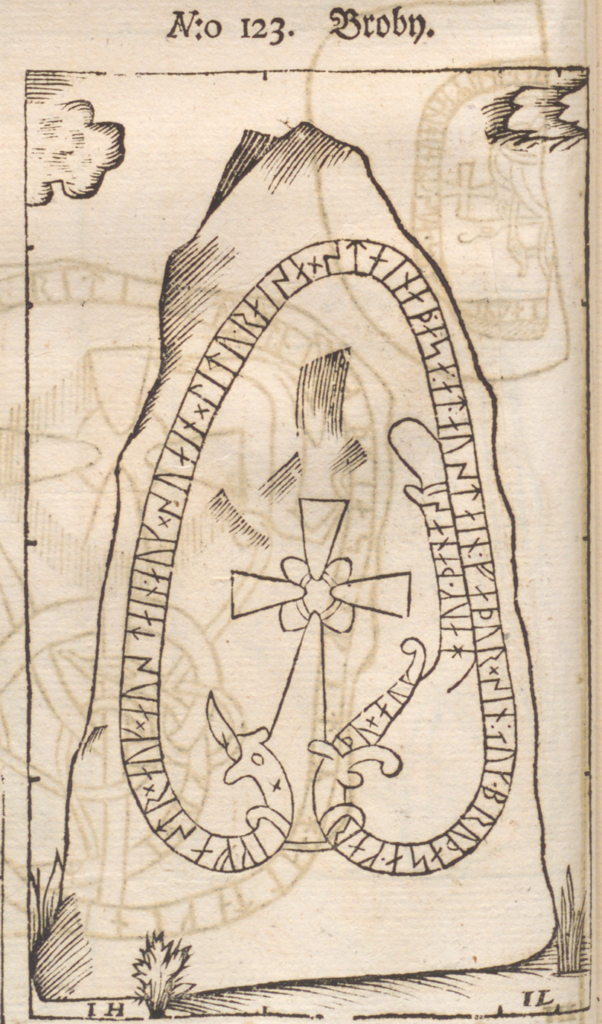
× ikifastr × auk × austain × auk × suain × litu * raisa + staina þasa * at * austain faþur × sin × auk × bru × þasa karþu × auk × hauk þana ×
Ingefast and Östen and Sven had these stones raised in memory of Östen, their father, and made this bridge and this mound.
We know from historical sources and other runestones that it was not unheard of for family members to remarry if their husband or wife passed away. In the Täby family tree, we know that both Jarlabanke’s grandmother Estrid and his father Ingefast were married twice. Jarlabanke was also married twice: his first marriage was to Fastvi, with whom he had a son, Sven. We know that Jarlabanke outlived Sven, because of one particular runestone which he raised with Fastvi. The style is somewhat simpler than many of the other stones from the band, but features the classic Viking Age cross.
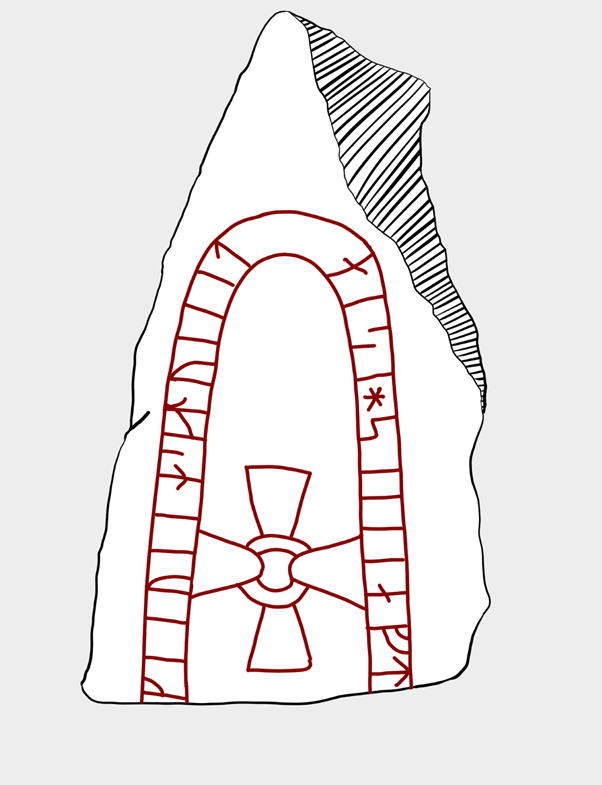
* iarla*b]aki * auk * fastui * litu * raisa * stina * aftiʀ [* suain * sun * sin
Jarlabanki and Fastvé/Fastvi had the stones raised in memory of Sveinn, their son.
After Fastvi, Jarlabanke remarried Kättilö, with whom he bore Ingefast.
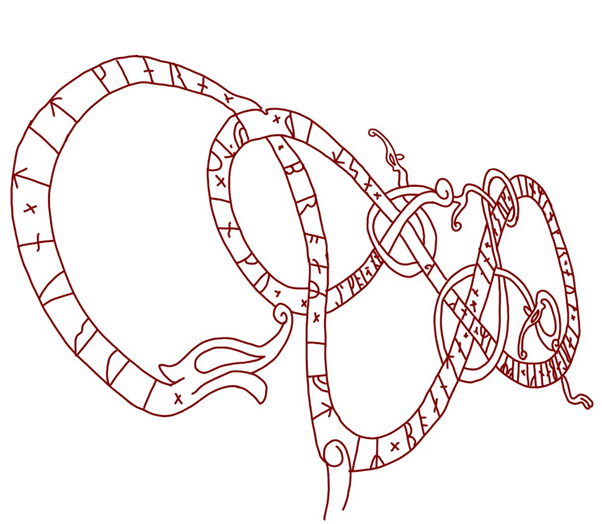
× iurun × lit × kiara ×× broaʀ × iftiʀ × boanta ×× sen ×× auk ×× henminkr × auk × iarlabanki × eftiʀ × ink[i]fast × estriþ × iftʀ × inkuar × alkoþan × trenk
Jórunn had the bridges made in memory of her husbandman; and Häming and Jarlabanke in memory of Ingifastr; Estrid in memory of Ingvar, an excellent valiant man.
The runic inscription U 143 is not a runestone, but rather a runic inscription made on a flat bedrock. What is incredible about this inscription is how many different generations and people are mentioned, all within the same engraving. Estrid had the monument made in memory of Ingvar, her second husband, while her grandchildren Häming and Jarlabanke and their mother Jórunn (Estrid’s daughter-in-law) had it made in memory of Ingefast, their father and husband, and Estrid’s son.
A majority of the main characters in the Täby soap opera are men. But Estrid Sigfaldsdotter, the grandmother of Jarlabanke, was an influential woman in her community, and her remains are among the oldest skeletal finds from Sweden that have been identified and named (something we will write about in a future article). She was also one of the first Christians in Sweden. Based on her runic inscriptions, she was clearly a powerful woman.
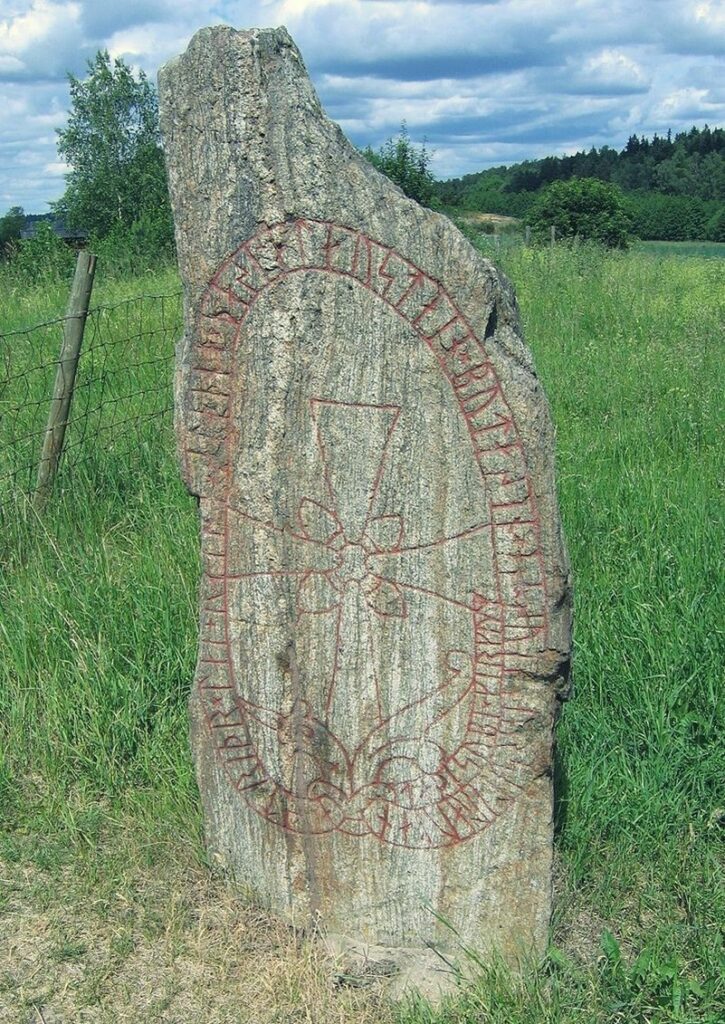
astriþr lat raisa staina þasa at austain buta sin is suti iursalir auk antaþis ub i kirkum
Estrid had these stones raised in memory of Östen, her husband, who travelled to Jerusalem and met his end up in Greece.
However, a majority of the other women named in the Täby line have been married in, and there is no mention of any influential daughters. The most likely reason behind this is that the daughters were married off, and became important characters in another family line, but were not mentioned in these runic inscriptions. Another, less pleasant, theory is that sons were favored over daughters, to the point of infanticide.

× …la×b(a)… … han : entaþis * i kirikium
Jarlabanki … met his end in Greece.
There is very little information regarding the demise of Jarlabanke, other than that he died in the same place as his grandfather Östen. His family lived on after his death and continued to raise monuments in the name of the Täby line, and runestones were raised for this family over a century.
Cover Photo: I, Berig. Wikipedia.
Runic translations: Rundata, the Scandinavian Runic-text Data Base.
Text and illustrations: Molly Wadstål. Copyright 2021 Scandinavian Archaeology.
Want to know more?
Nordic Elites in Transformation c. 1050-1250, Volume II, ed. by Esmark, Kim Hermanson, Lars Orning, Hans Jacob.
Tvegifte i Täby? Några synpunkter på Jarlabanke-stenarnas datering och placering Larsson, Mats G. Fornvännen 91:3, 143-151 http://kulturarvsdata.se/raa/fornvannen/html/1996_143
Hem till Jarlabanke: Jord, Makt och Evigt liv i Östra Mälardalen under Järnåldern och Medeltid, Michael Olausson, 2008.
About the author

Molly Wadstål
Archaeologist with a passion for archaeometry. I finished my bachelor’s degree in Norway at the University of Oslo, and also studied at Stockholm University to become an osteologist (bone specialist). I finished my master’s thesis in the Spring of 2021, in which I analyzed animal remains from the Viking town of Birka. I am currently working as a field archaeologist here in Norway.
My focus areas thus far have been on the later parts of the Iron Ages, specifically Birka and the Sandby hillfort. I am also very passionate about the Stone Age (in particular the Paleolithic and Mesolithic), and I am the happiest when I am simply working with archaeology, regardless of era. I am also very passionate about Archaeological science, particularly studies around bone.
As Junior editor and Illustrator, my work here at Scandinavian archaeology is to write articles, and to do more hands-on administrator work. A large part of the illustrations here on our website are made by yours truly.
